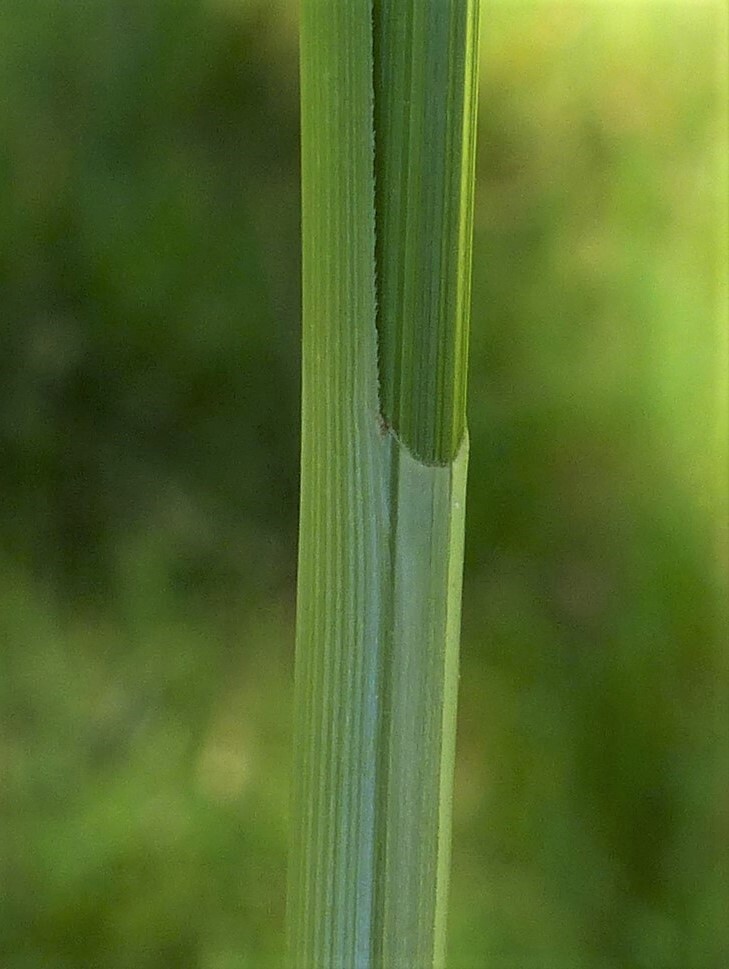Carex appressa
R.Br. Tall SedgeRhizome short; shoots densely tufted. Culms erect, triquetrous, occasionally trigonous towards base, scabrous above, 40–170 cm long, 2–4 mm diam., solid. Leaves often septate-nodulose (more obvious when dried), shorter than or equalling culms, (2–)4–12 mm wide; sheath grey-brown, leaf sheath front (inner face) not cross-rugulose; ligule rounded to truncate. Inflorescence narrow, erect, 4–45 cm long, compound, with numerous short spikes solitary at nodes or on appressed spike-like branches to 3 cm long; lowest involucral bract very short. Spikes sessile, contiguous, erect to spreading at maturity, to 1 cm long; all spikes with male flowers above female flowers; glumes acute, occasionally shortly mucronate, yellow-brown, occasionally with white margins near apex; female glumes 2–2.5 mm long; utricles 2–3 mm long, 1.0–1.7 mm diam., ovoid, with thickened, corky truncate base, several-nerved, hispid on narrowly winged or ribbed margins of beak and shoulders, greenish-brown to dark yellow-brown; beak c. 1 mm long, with apex bifid; style 2-fid. Nut ovoid, lenticular, yellow-brown. Flowers spring.
MuM, Wim, GleP, Brid, VVP, VRiv, MuF, GipP, OtP, WaP, Gold, CVU, GGr, DunT, NIS, EGL, EGU, WPro, HSF, HNF, OtR, Strz, MonT, HFE, VAlp. New Zealand. Recorded as a casual wool alien in United Kingdom. Except for the drier north and north-west, and heavy clays of Volcanic Plains, rather common along watercourses and in wettish depressions almost throughout the State.
Easily confused with Carex incomitata (see notes under C. incomitata). Also similar to C. declinata (native to New South Wales, and Queensland), which also has septate-nodulose leaves, and an elongate spike-like inflorescence. In C. appressa the beak of the utricle is hispid on the margins, and shorter than in C. declinata. Also somewhat similar to C. densa (see notes under C. densa).
Wilson, K.L. (1994). Cyperaceae. In: Walsh, N.G.; Entwisle, T.J., Flora of Victoria Vol. 2, Ferns and Allied Plants, Conifers and Monocotyledons, pp. 238–356. Inkata Press, Melbourne.
 Spinning
Spinning



